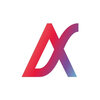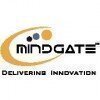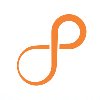Filter interviews by
Covalense Global Interview Questions and Answers
Covalense Global Interview Experiences
5 interviews found
(1 Question)
- Q1. Automation Anywhere code
RPA Consultant Interview Questions asked at other Companies
I applied via Naukri.com and was interviewed in May 2023. There were 4 interview rounds.

(3 Questions)
- Q1. General questions about Business analysis, Documentations and tools
- Q2. What is BRD ?
- Ans.
BRD stands for Business Requirements Document, which outlines the business needs and requirements for a project.
BRD is a formal document that describes the business needs and requirements for a project.
It serves as a reference point for the project team to ensure that the project meets the business objectives.
BRD typically includes sections such as project scope, objectives, stakeholders, functional requirements, non-f...
- Q3. What are other documents prepared?
- Ans.
Various documents prepared include business requirements document, functional requirements document, use cases, process flows, and data models.
Business Requirements Document (BRD) outlines the business problem, objectives, and proposed solution.
Functional Requirements Document (FRD) details the system functionalities and features.
Use Cases describe interactions between users and the system.
Process Flows illustrate the ...
(1 Question)
- Q1. Introduction, Projects handled and roles played. Different types of requirements and how to ensure all requirements met. Tools and technologies handled and scenario based questions etc
(1 Question)
- Q1. Compensation and benefits and negotiation of salary
Senior Business Analyst Interview Questions asked at other Companies
I applied via LinkedIn and was interviewed in Sep 2023. There were 3 interview rounds.

(1 Question)
- Q1. Python, Django, SQL basic questions
(2 Questions)
- Q1. Why do you want to join this company
- Q2. What is your salary expectation
Junior Software Engineer Interview Questions asked at other Companies
I applied via LinkedIn and was interviewed in Jan 2022. There were 3 interview rounds.
(1 Question)
- Q1. Python basic like map, filter, list
(1 Question)
- Q1. Pandas, Django model, view template
(1 Question)
- Q1. Basic intro and previous company related questions
Interview Preparation Tips
Python Developer Interview Questions asked at other Companies
Covalense Global interview questions for popular designations
I applied via Naukri.com and was interviewed in Mar 2021. There were 3 interview rounds.
Interview Questionnaire
1 Question
- Q1. Questions on basic concepts of Programming
Interview Preparation Tips
Senior Software Engineer Interview Questions asked at other Companies
Top trending discussions






Interview questions from similar companies

(2 Questions)
- Q1. Angular A to Z Hooks,Services,Api Integration,component communication
- Q2. Html ,CSS basic
(1 Question)
- Q1. Server and web api related questions
(2 Questions)
- Q1. Can you provide details about yourself and your educational background?
- Ans.
I am a software engineer with a Bachelor's degree in Computer Science and experience in developing web applications.
Bachelor's degree in Computer Science
Experience in developing web applications
- Q2. About Winjit technologies
Interview Preparation Tips

I applied via Naukri.com and was interviewed in Dec 2024. There was 1 interview round.
(4 Questions)
- Q1. All employees having same salary in the smae department sql and pysprk
- Q2. How to create pipeline in databricks
- Ans.
To create a pipeline in Databricks, you can use Databricks Jobs or Apache Airflow for orchestration.
Use Databricks Jobs to create a pipeline by scheduling notebooks or Spark jobs.
Utilize Apache Airflow for more complex pipeline orchestration with dependencies and monitoring.
Leverage Databricks Delta for managing data pipelines with ACID transactions and versioning.
- Q3. Palindrome, 2nd char in every word make is to upper case, sql rank and dense rank releated questions , given 2 tables country and city we need to calculate total population in each continent by joining the...
- Q4. String manuplation questions inpython
Interview Preparation Tips

Associate Software Engineer Interview Questions & Answers
Webkul Softwareposted on 2 Jan 2025
I applied via Referral
Print a specific pattern using any programming language.
(3 Questions)
- Q1. What is a class in Object-Oriented Programming (OOP)?
- Ans.
A class in OOP is a blueprint for creating objects, defining their properties and behaviors.
Classes are templates for creating objects in OOP
They define the properties (attributes) and behaviors (methods) of objects
Objects are instances of classes, each with its own unique data
Inheritance allows classes to inherit properties and behaviors from other classes
Encapsulation ensures that the data is hidden and can only be a...
- Q2. What is the difference between an abstract class and an interface?
- Ans.
Abstract class can have both abstract and non-abstract methods, while interface can only have abstract methods.
Abstract class can have constructors, fields, and methods, while interface cannot have any implementation.
A class can only extend one abstract class, but can implement multiple interfaces.
Abstract classes are used to define common characteristics of subclasses, while interfaces are used to define contracts for...
- Q3. What is joining and creating an inner join query?
- Ans.
Joining is combining data from two or more tables based on a related column, while an inner join query retrieves only the matching records.
Joining is used to combine data from multiple tables in a database.
Inner join query retrieves only the records that have matching values in both tables.
Syntax for inner join: SELECT columns FROM table1 INNER JOIN table2 ON table1.column = table2.column;
Example: SELECT orders.order_i...
Interview Preparation Tips
- OOPS
- Baisc Of any of Programing
- MySQL
- joins

I applied via Naukri.com and was interviewed in Dec 2024. There was 1 interview round.
(4 Questions)
- Q1. What is runtime polymorphism, and can you provide a code example to illustrate it?
- Ans.
Runtime polymorphism allows a subclass to provide a specific implementation of a method that is already provided by its parent class.
Runtime polymorphism is achieved through method overriding, where a subclass provides its own implementation of a method that is already defined in its superclass.
The method to be overridden must have the same name, return type, and parameters in both the superclass and subclass.
When an o...
- Q2. Streams in java
- Ans.
Streams in Java provide a way to process collections of objects in a functional style.
Streams are sequences of elements that support various operations like filter, map, reduce, etc.
They can be created from collections, arrays, or generate elements dynamically.
Streams can be sequential or parallel, allowing for efficient processing of large datasets.
Example: List<String> names = Arrays.asList("Alice", "Bob", "Cha...
- Q3. How do we create threads in Java, and how do we invoke them?
- Ans.
Threads in Java are created by extending the Thread class or implementing the Runnable interface, and invoked using the start() method.
Threads can be created by extending the Thread class and overriding the run() method.
Threads can also be created by implementing the Runnable interface and passing an instance of the class to a Thread object.
Threads are invoked by calling the start() method on the Thread object.
- Q4. What is a Rest Template and how is it used?
- Ans.
Rest Template is a class in Spring that simplifies making HTTP requests and handling responses.
Rest Template is part of the Spring framework in Java.
It can be used to make HTTP requests to RESTful web services.
It simplifies the process of making HTTP calls and handling responses.
Rest Template can handle GET, POST, PUT, DELETE, etc. requests.
Example: RestTemplate restTemplate = new RestTemplate();

I applied via LinkedIn and was interviewed in Sep 2024. There were 3 interview rounds.
(2 Questions)
- Q1. What is your work Experience
- Ans.
I have 5 years of experience working as a mechanical engineer in the automotive industry.
5 years of experience in mechanical engineering
Specialized in automotive industry
Worked on designing and testing vehicle components
Experience with CAD software for modeling and simulations
- Q2. Why am i looking for job change
- Ans.
Seeking new challenges and growth opportunities in a different environment.
Looking for new challenges to enhance skills and knowledge
Seeking better career growth opportunities
Interested in exploring different work environments
Want to broaden professional network
(4 Questions)
- Q1. What area i have covered testing
- Ans.
I have covered testing in areas such as software development, quality assurance, and system integration.
Software testing methodologies such as unit testing, integration testing, and regression testing
Quality assurance processes to ensure software meets requirements and standards
System integration testing to verify that different components work together seamlessly
- Q2. What type of testing i have experience for
- Ans.
I have experience with various types of testing including unit testing, integration testing, system testing, and regression testing.
Unit testing: Testing individual components or functions of the software in isolation.
Integration testing: Testing how different components work together.
System testing: Testing the entire system as a whole.
Regression testing: Testing to ensure that new code changes do not adversely affect
- Q3. What is functional & Non functional Testing
- Ans.
Functional testing ensures that the software functions as intended, while non-functional testing focuses on performance, usability, and security.
Functional testing checks if the software meets the specified requirements.
Non-functional testing evaluates aspects like performance, scalability, reliability, and security.
Examples of functional testing include unit testing, integration testing, and system testing.
Examples of...
- Q4. Give positive & Negative Example for a scenario in testing
- Ans.
Positive & Negative testing scenario examples
Positive example: Testing a login form with valid credentials should allow the user to access the system
Negative example: Testing a login form with invalid credentials should display an error message
(2 Questions)
- Q1. What will you do if you face challenge in job
- Ans.
I will approach the challenge methodically, seek help if needed, and work towards finding a solution.
Assess the challenge and break it down into smaller tasks
Research and gather information to understand the problem better
Consult with colleagues or supervisors for advice or guidance
Experiment with different solutions and adapt as needed
Stay persistent and focused on finding a resolution
- Q2. What process you will follow for a critical Issue you find
- Ans.
I will follow a systematic approach to identify, analyze, prioritize, and resolve the critical issue.
Identify the critical issue and gather all relevant information
Analyze the root cause of the issue and its impact on the system
Prioritize the critical issue based on severity and potential impact
Develop a plan of action to resolve the issue efficiently
Implement the solution and monitor its effectiveness
Document the enti
Interview Preparation Tips
- Functional Testing
- Agile Testing
Skills evaluated in this interview
Covalense Global Interview FAQs
Tell us how to improve this page.
Covalense Global Interviews By Designations
Interview Questions for Popular Designations
Covalense Global Interview Process
based on 5 interviews
Interview experience
Interview Questions from Similar Companies
Covalense Global Reviews and Ratings
based on 56 reviews
Rating in categories
|
Senior Software Engineer
45
salaries
| ₹8 L/yr - ₹21 L/yr |
|
Software Engineer
44
salaries
| ₹5 L/yr - ₹15.2 L/yr |
|
Technical Lead
32
salaries
| ₹13.5 L/yr - ₹28.5 L/yr |
|
Software Developer
9
salaries
| ₹3.6 L/yr - ₹13.7 L/yr |
|
Associate
8
salaries
| ₹2 L/yr - ₹3 L/yr |

TCS

Infosys

Wipro

HCLTech
- Home >
- Interviews >
- Covalense Global Interview Questions











